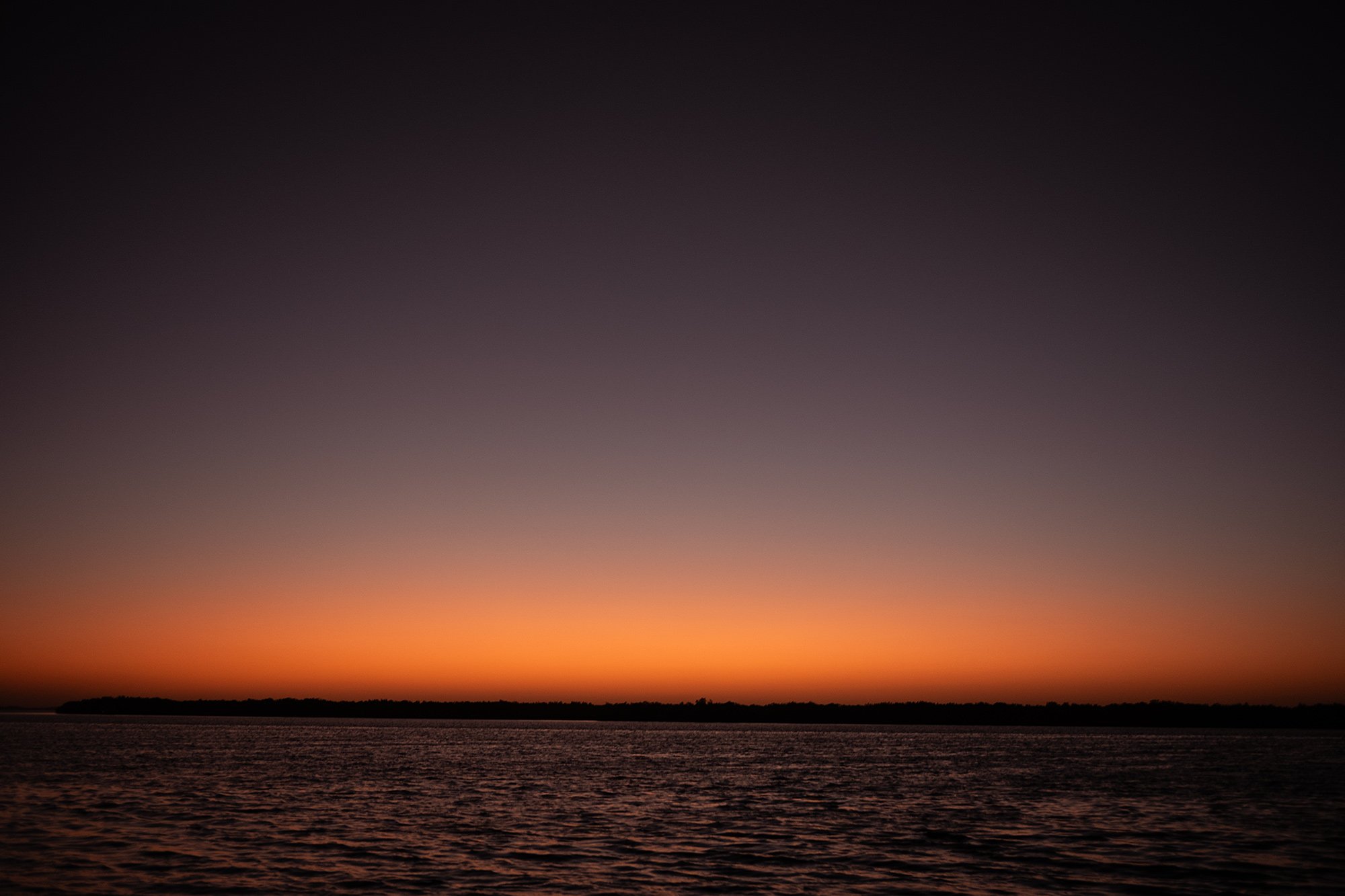
Senegal chapter four
Touba and the Saloum delta.
Funny thing about sleeping in the desert—you can always hear the neighbors snore.
I am up before the dawn, though it’s not the first time I’ve gotten up. In the middle of the night I woke up to step outside and look up at the night sky. The almost full moon kept me from seeing deeply into space, but it was neat to see the dunes bathed in the moonlight.
The night before Amadou showed me a photo on his phone. His friend had secured tickets to the Youssou N’Dour concert on the 1st. I could barely contain my excitement. High school me would have done cartwheels if he knew how.
I stood barefoot on the cold sand to watch the sun rise, the moon bright overhead. Cows lowed from a nearby ravine, their voices carried over the dunes.
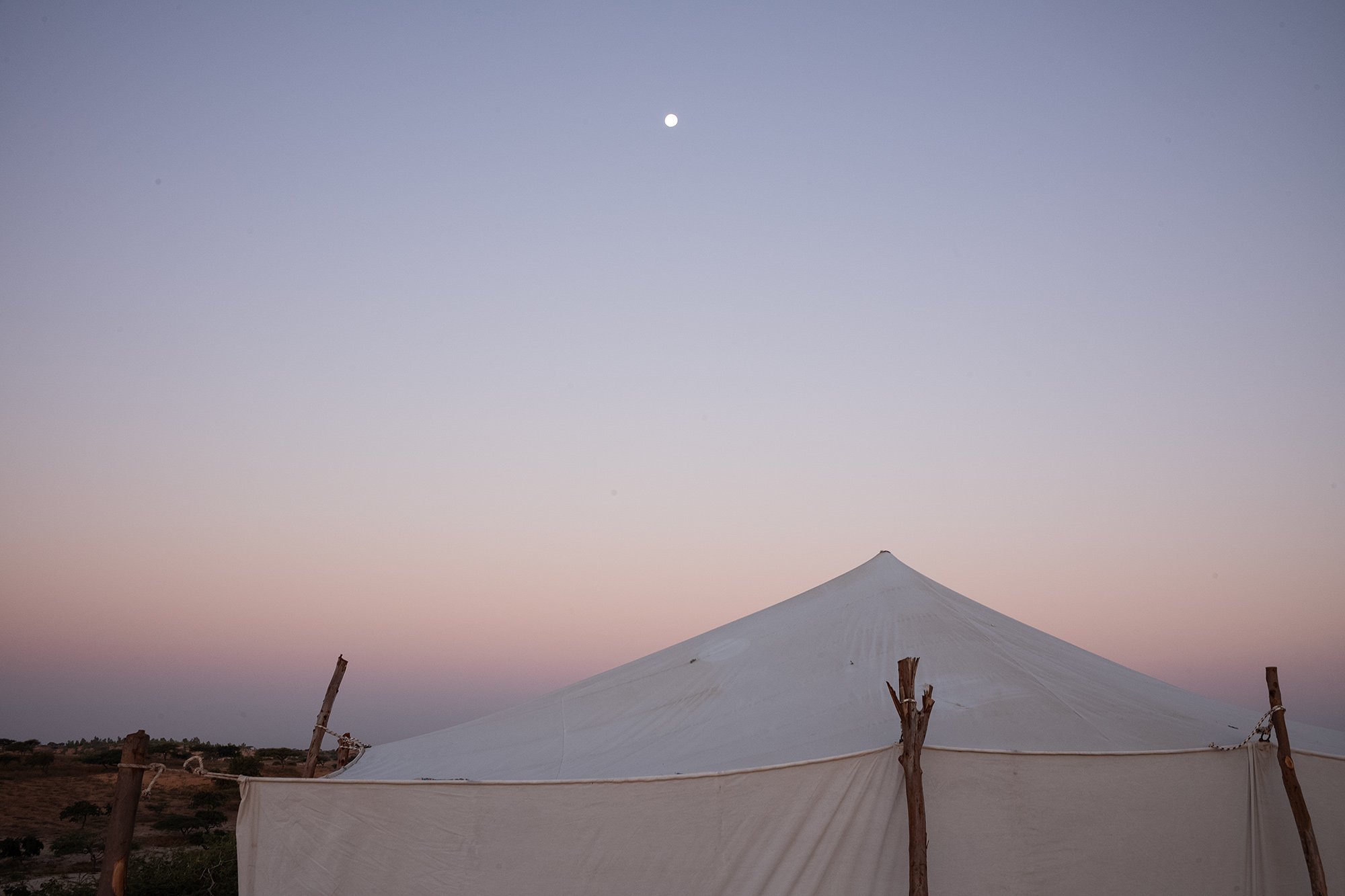


After breakfast the truck takes us to a nearby town where we pick up the van. We climb aboard to set off. It’s stuck in the sand. We alight and move to the back to push, freeing the van from its sandy spot.


We settle in for the two-hour drive to Touba, the second-most populated city in Senegal and home to one of the largest mosques in Africa. It’s a holy city of the Mouride brotherhood (a large Sufi order), and the burial place of its founder Shaikh Ahmadou Bàmba Mbàcke. Alcohol and drugs are forbidden within its bounds.
We pass small villages and towns. Bargua village, Dibiyate, Bargue, their names on small plaques by the side of the road.
We are in a little bit of a time crunch. Friday prayers commence at 12, after which it will be impossible to visit. We arrive ito the city around 11:30, and it’s a long crowded road to the mosque.

We park in a small lot just opposite the mosque. Our guide meets us and looks over the Italians. He gives the boy a thawb and a scarf to his mom with which to cover her head from a large plastic bag of clothing. He urges us forward. We cross the street and take our shoes off at the gates. Amadou tells us he’ll take care of them.
The mosque is beautiful, made of Italian marble and stone. Our guide walks us through an entrance and an outer hall, pointing out the women’s side and the men’s, the carpets on the floor and the intricate designs that adorn the columns and domes.


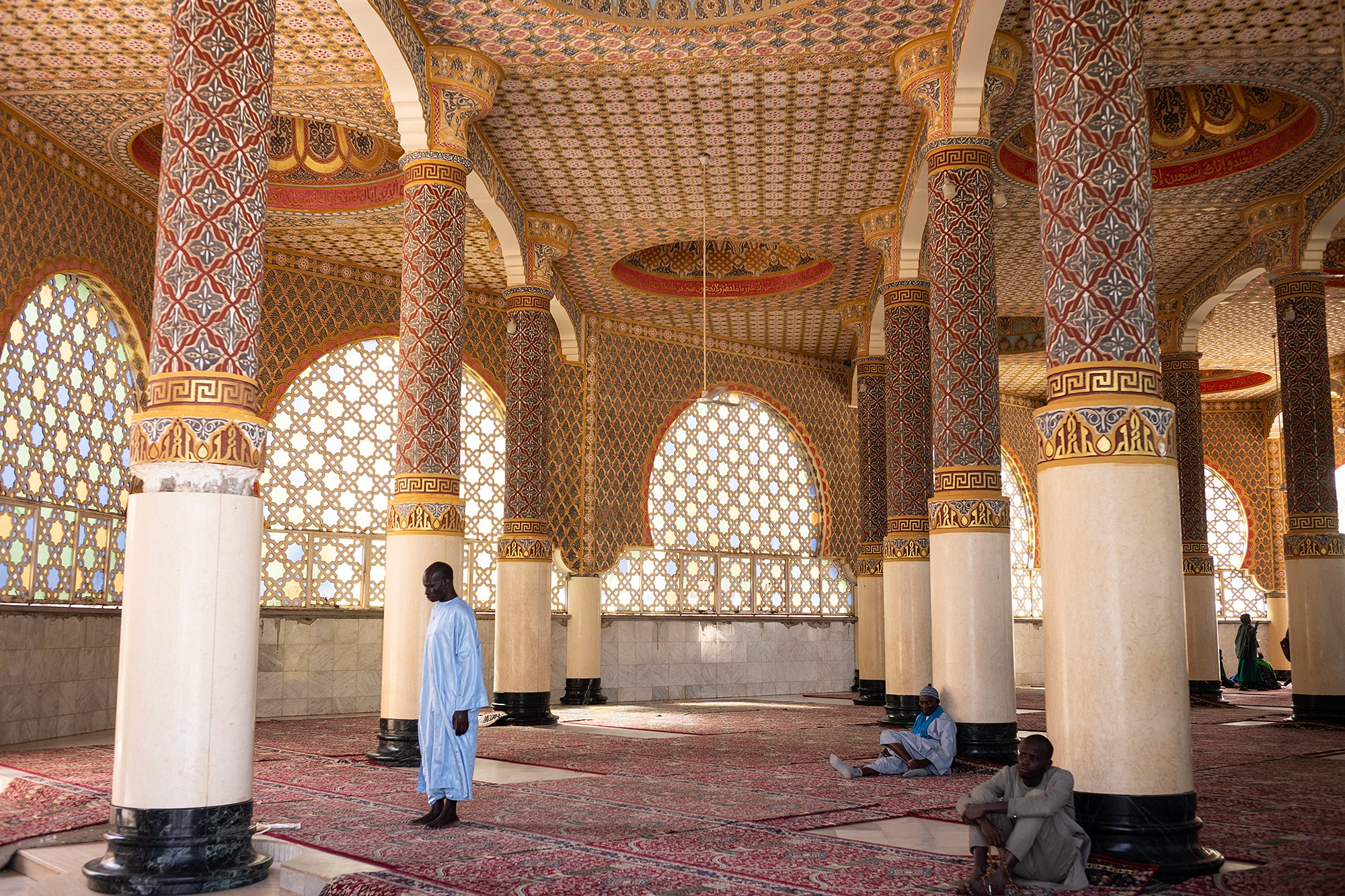



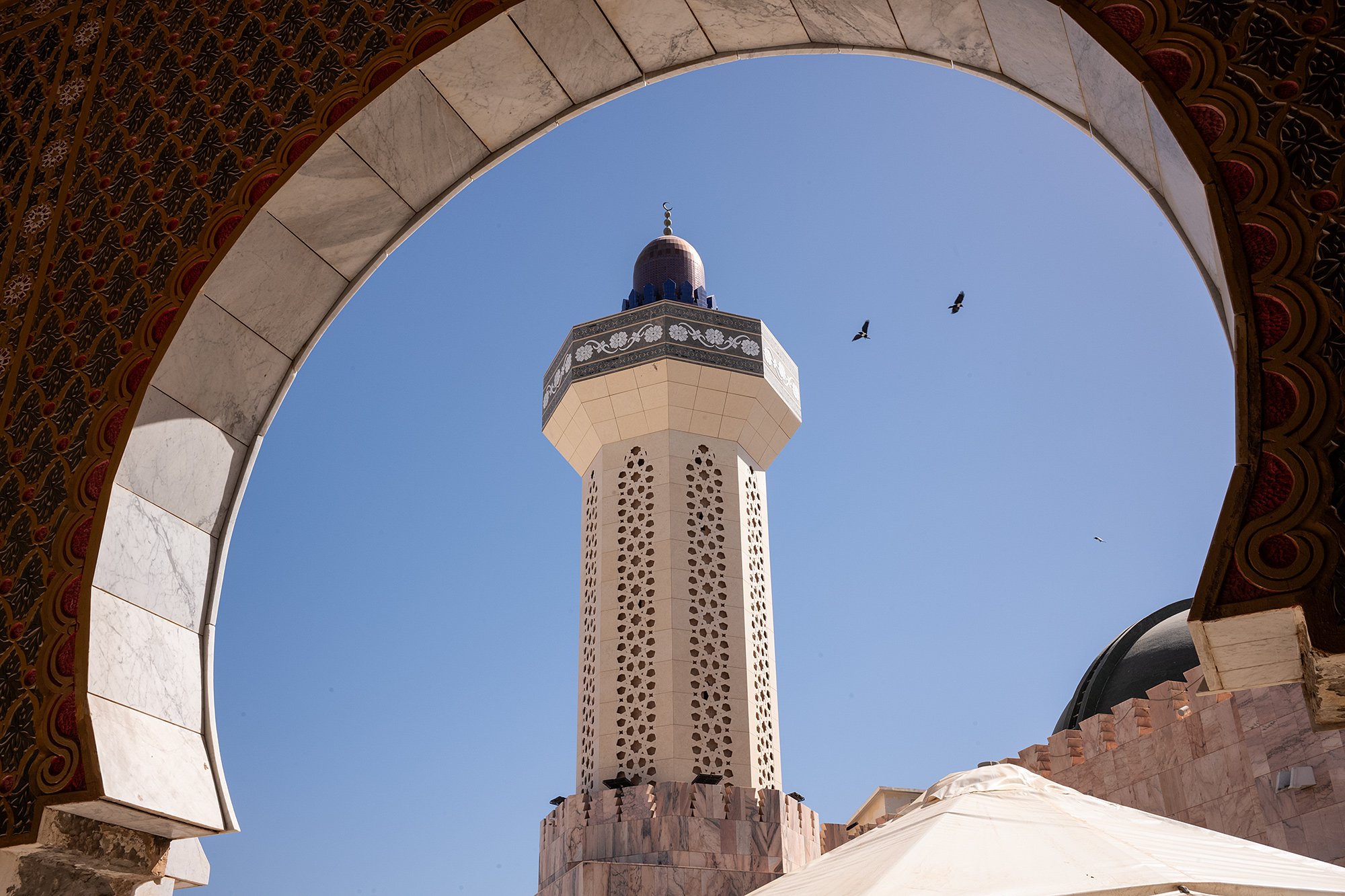
We are not allowed inside—it’s too close to prayers—and so our guide walks us along the perimeter, through the arcade towards the sahn.

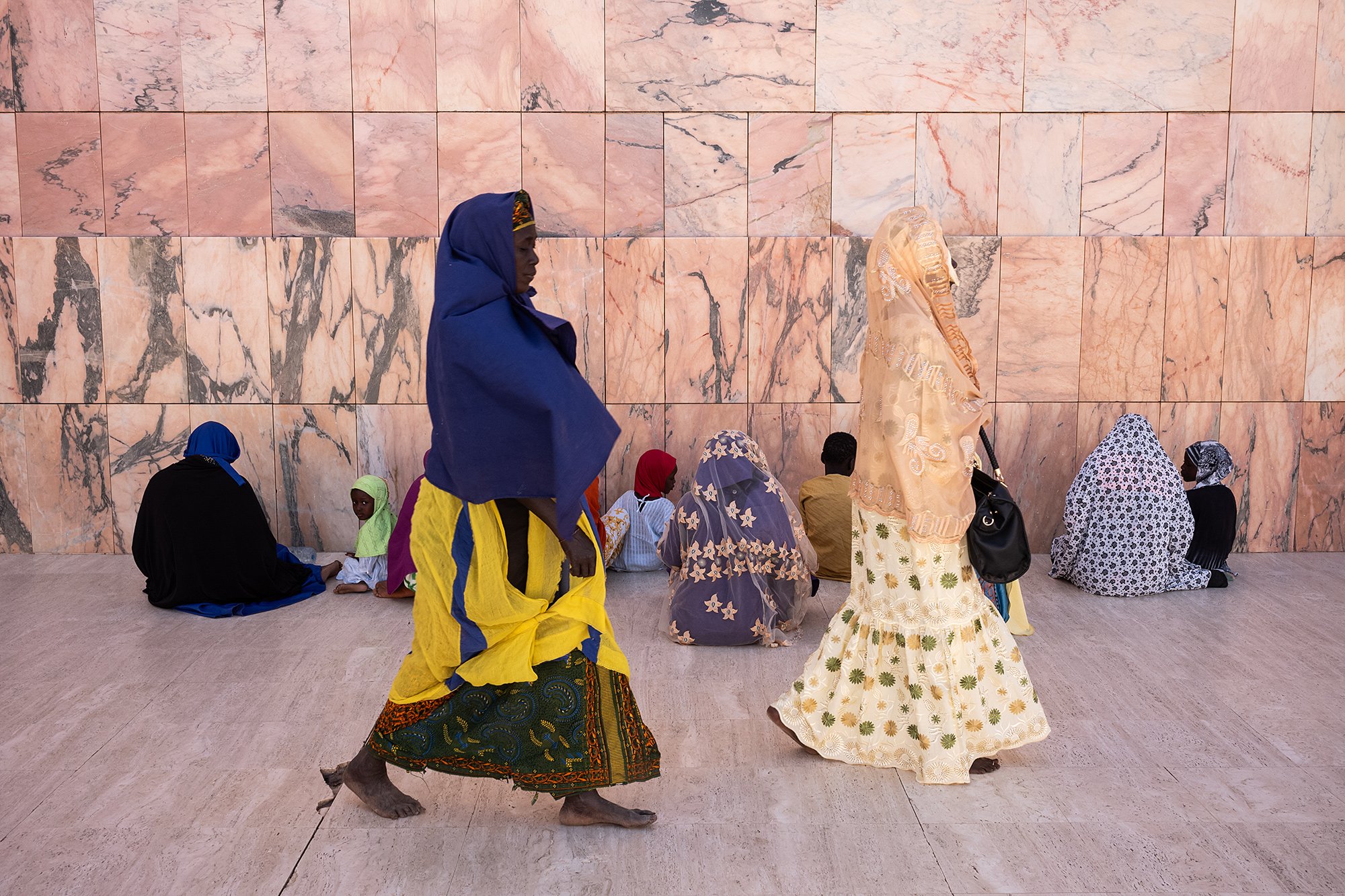


He leads us outside and points out the seven towers of the mosque. Here, you can get a good photo, he tells us. I wait for Roberta to take a photo of her son in front of the mosque before making my own.

Our guide takes us to the Mausolée Cheikh Ahmadou Bamba, just outside the gate. He’s checking his watch, urging us on.

Our guide seems to breathe a sigh of relief now that we’re outside the courtyard. We walk back around the outer courtyard towards where we entered. Amadou meets us and tells us he’s glad we made it in time. I’m happy to have visited, but could have easily spent hours at the mosque; we’ve spent less than 20 minutes. It’s the place I most wanted to visit in Senegal and lament how quickly we were rushed through our visit, but I’m happy to have been able to have seen what we have. Outside, the guide approaches a large bus of tourists to tell them they’re too late and that they’ll not be able to tour the mosque.
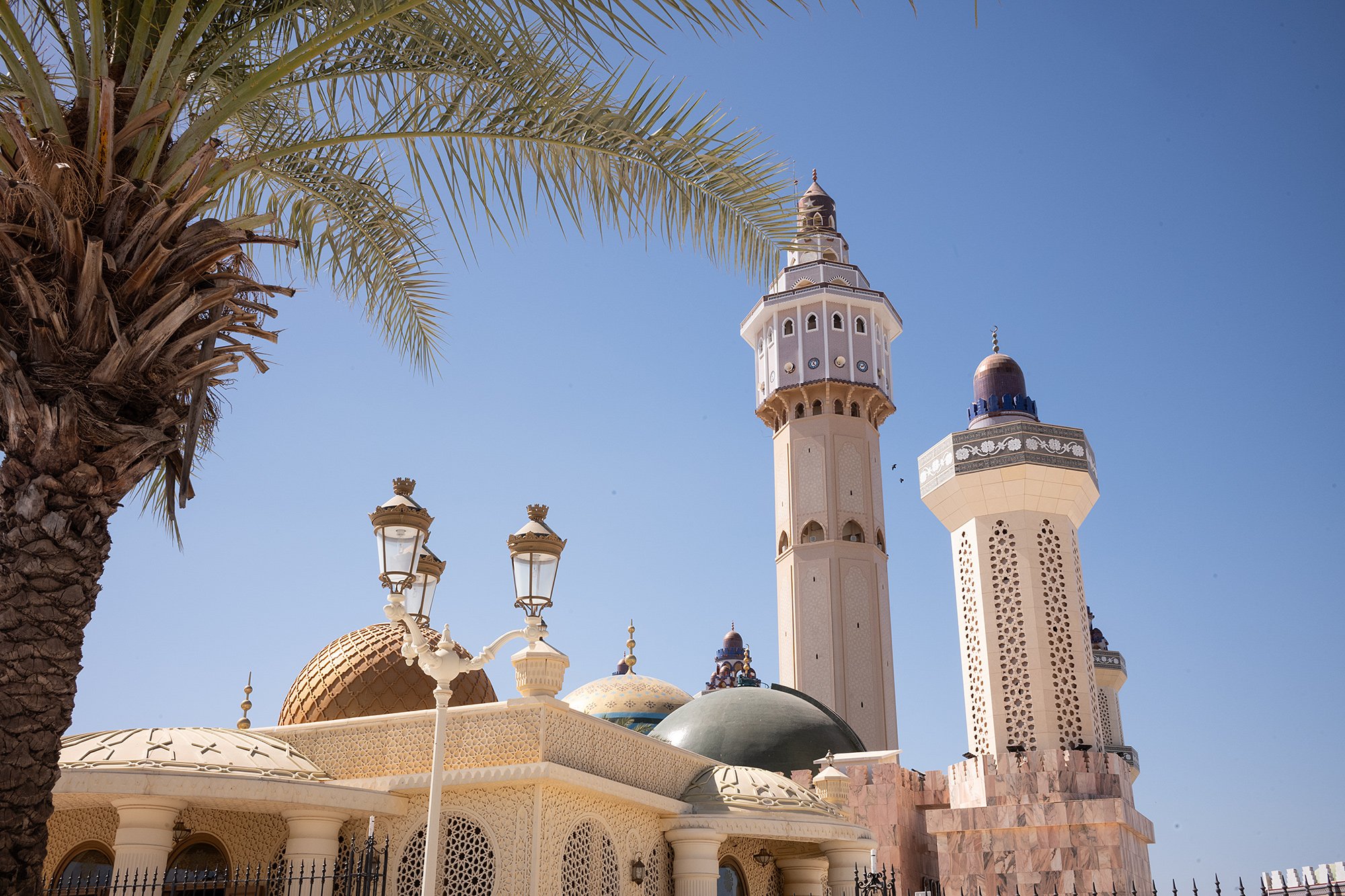
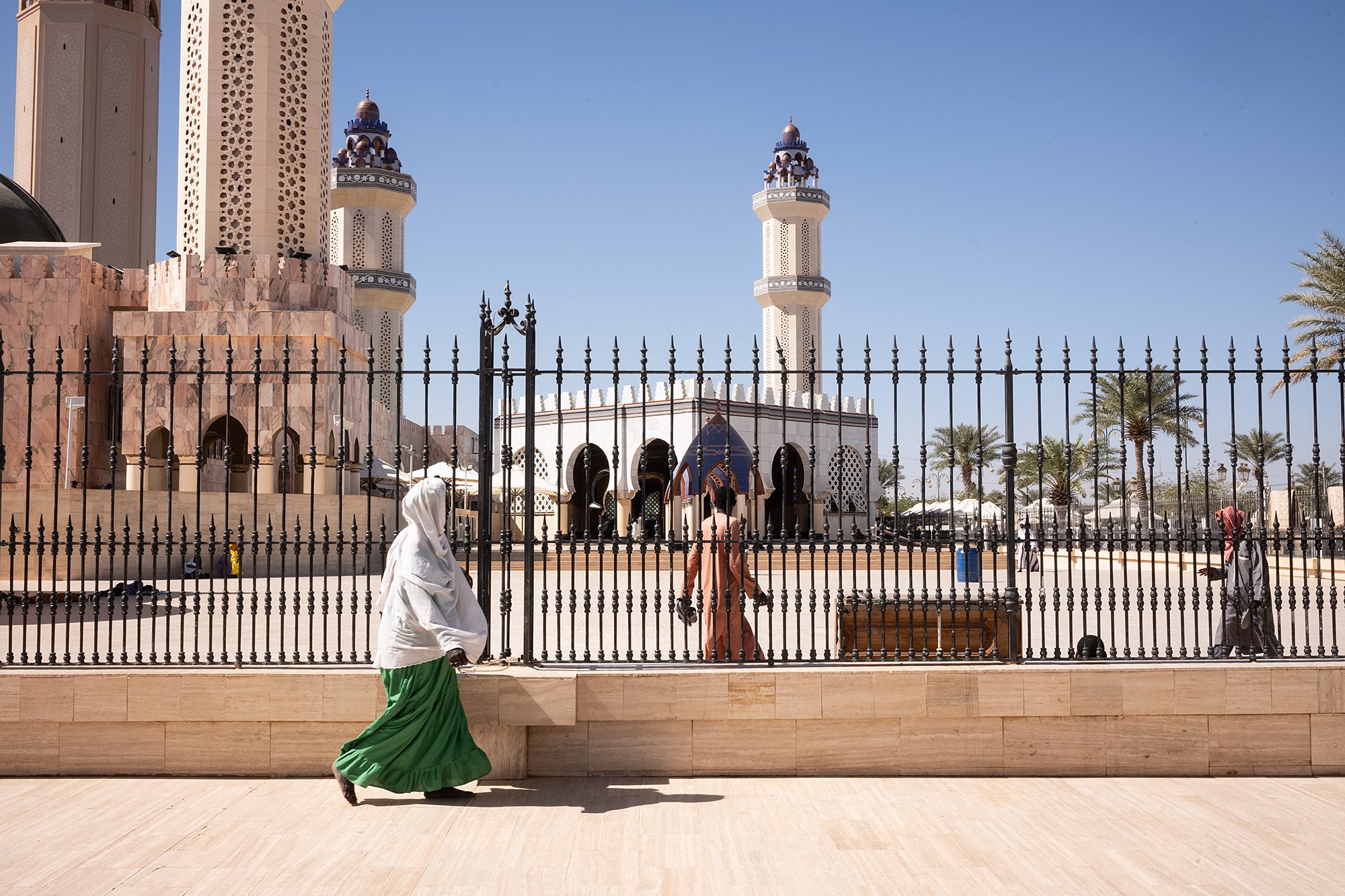
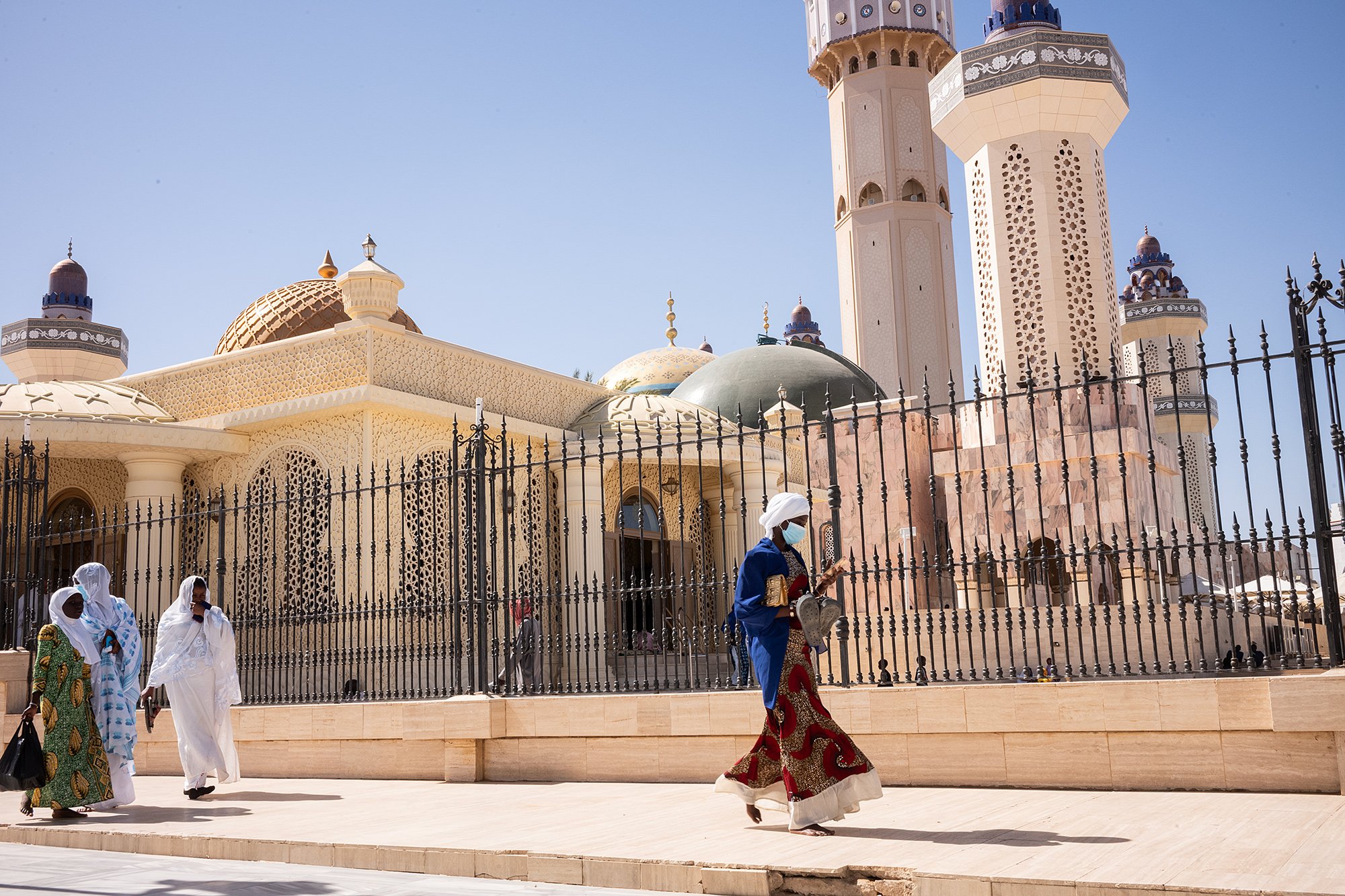


I buy dates from a woman selling them by the van. I think at first they are nuts, but Amadou corrects me before I take a bite. I share them with everyone in the van. We eat lunch in Touba at a restaurant not far from the mosque. It’s roasted chicken with a surprisingly spicy rice accompaniment that I really enjoy. A handful of crispy rice is added to give extra texture to the starch.

After lunch it’s another couple of hours to the Saloum delta and we settle in for the drive. I had asked Amadou his favorite place to visit in Senegal and he told me the delta. He told me I’d find out why for myself. He’s planned two nights in a camp by the water.

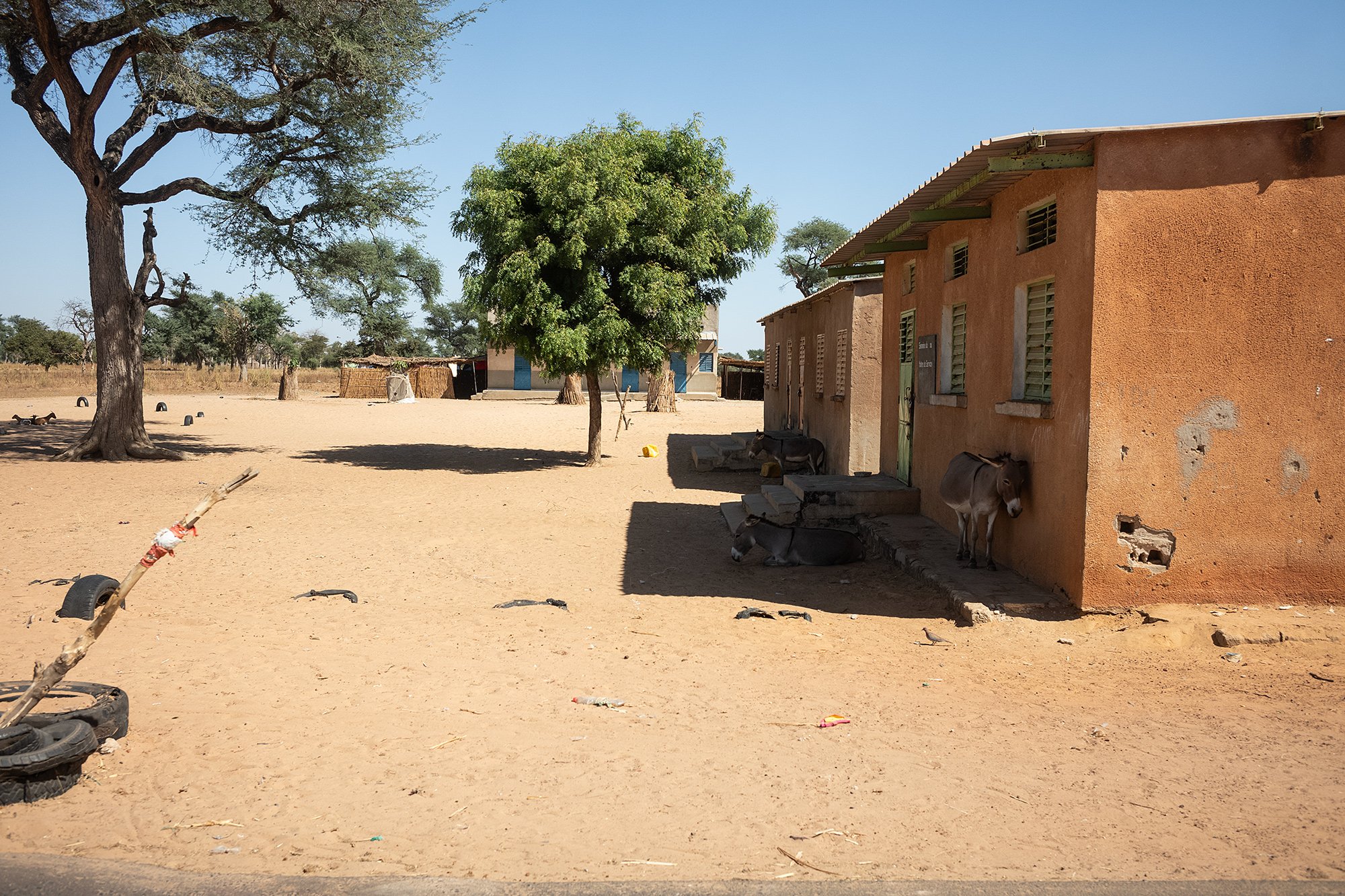
We arrive in Ndangane and Amadou arranges a pirogue to take us to the camp. Boats line the shore and someone motions us to board one. Our driver lives in Saly, relatively nearby. He’ll spend the next two nights at home.


It’s a leisurely cruise to the Campement Nouvelle Vague du Saloum past mangrove forests and the occasional boat carrying tourists and locals. The camp is set up with six concrete huts by the side of the water. Hammocks swing under a thatched canopy, a terraced restaurant is where we’ll take our breakfasts and dinners.
I order a juice and sit on the terrace looking out over the water. Amadou tells us when dinner is and we are shown to our cabins. We have the rest of afternoon to ourselves. In the morning, we’ll have a horsedrawn cart tour of the nearby towns and the dry forests. And then he has a surprise for us.

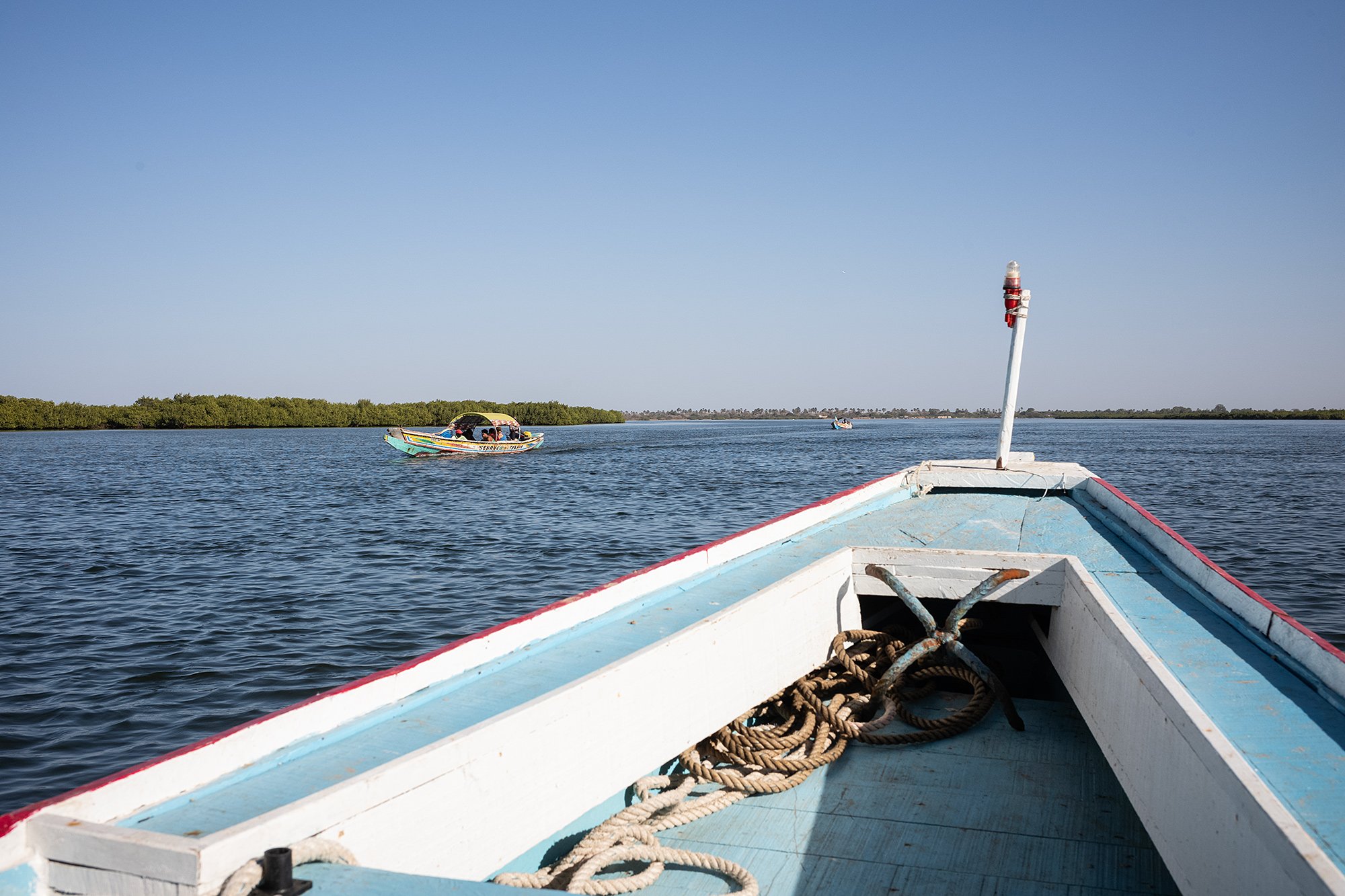

In the afternoon I download a new book to read and rock myself in a hammock. A man fishes from and off the dock and I watch as he collects his net carefully before tossing it into the water. I text my cousin and he asks me to take a photo of his catch. I wander over to him and ask to see inside his sack. He proudly shows me his fish.
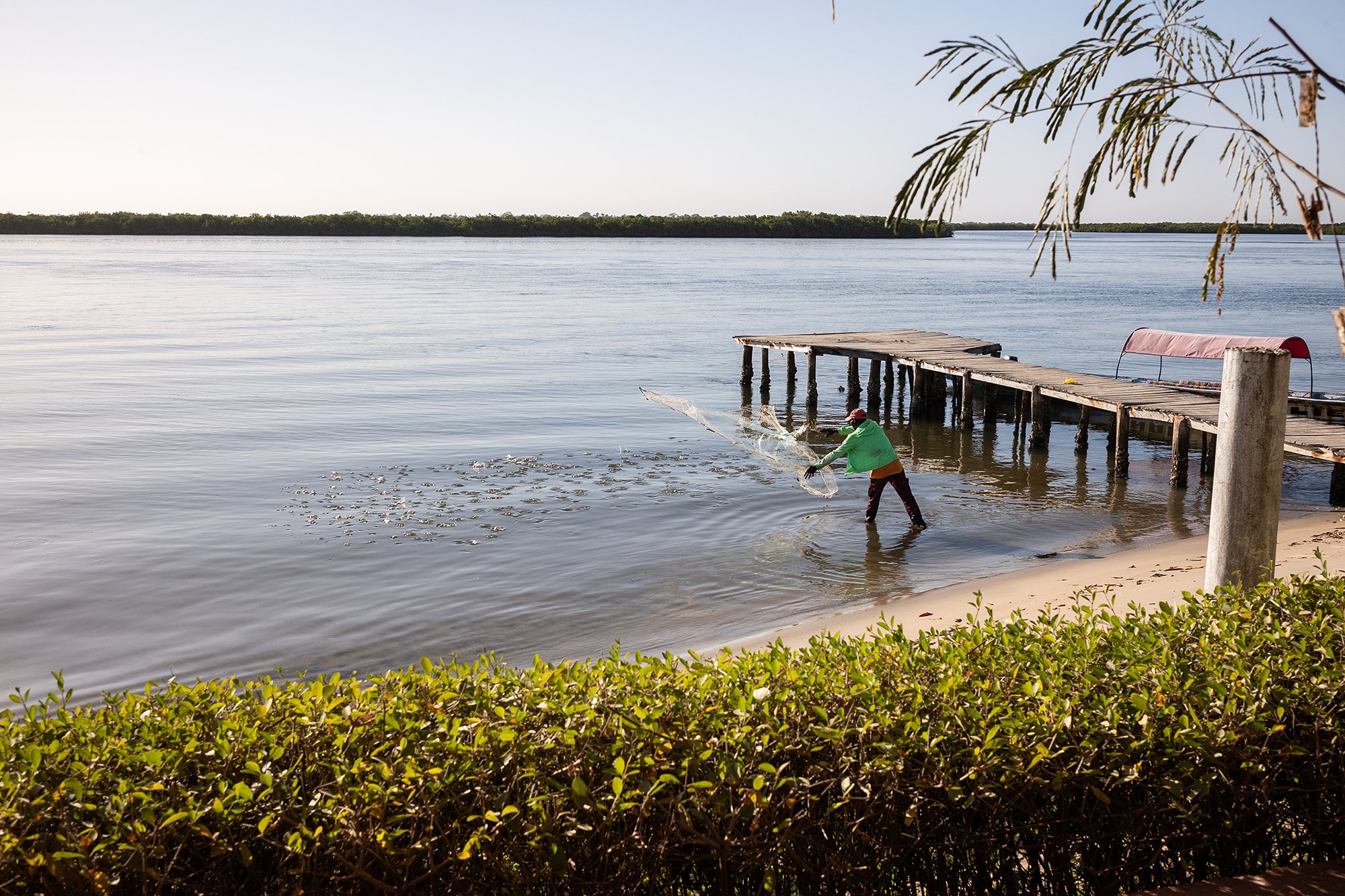

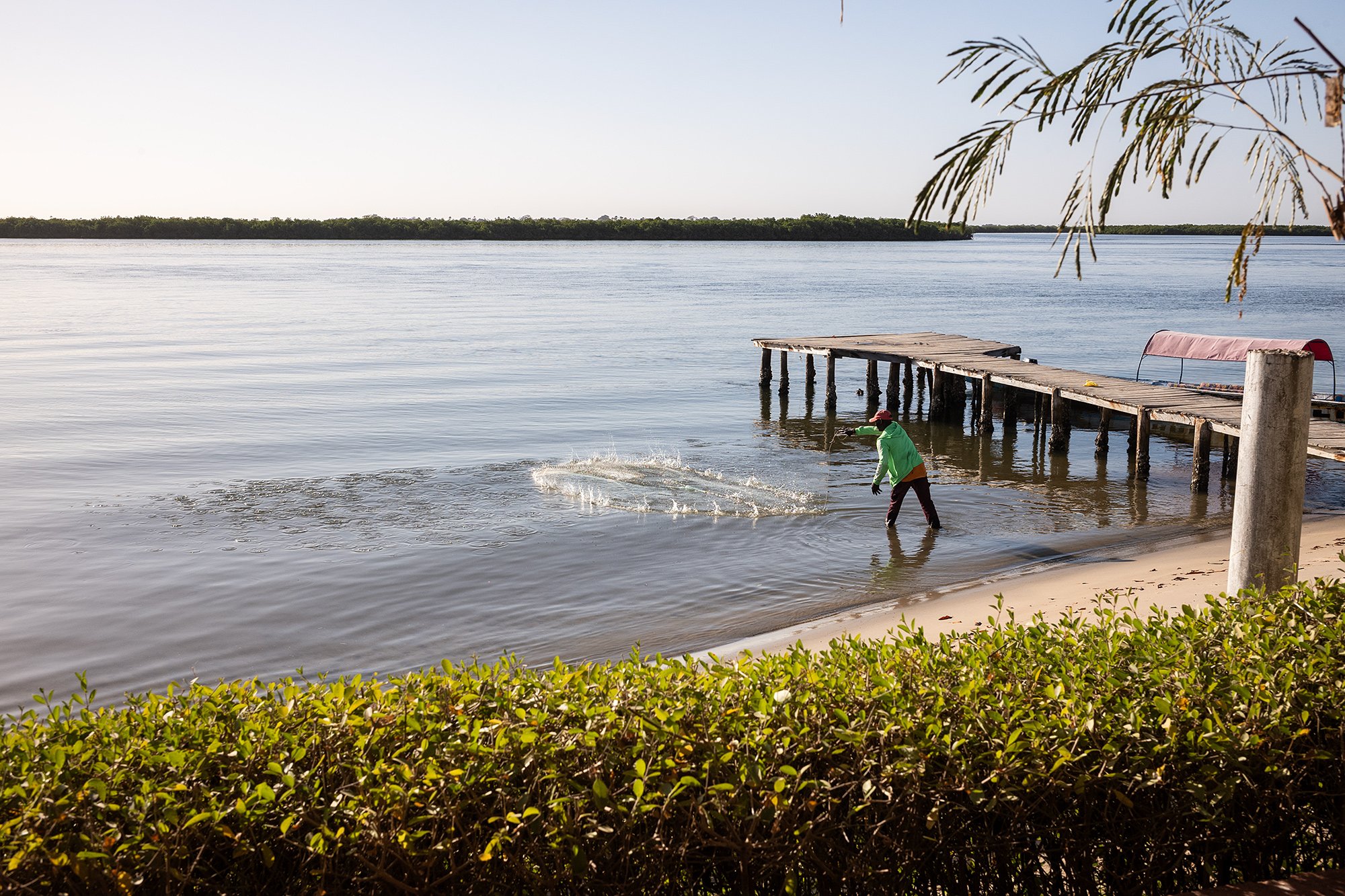
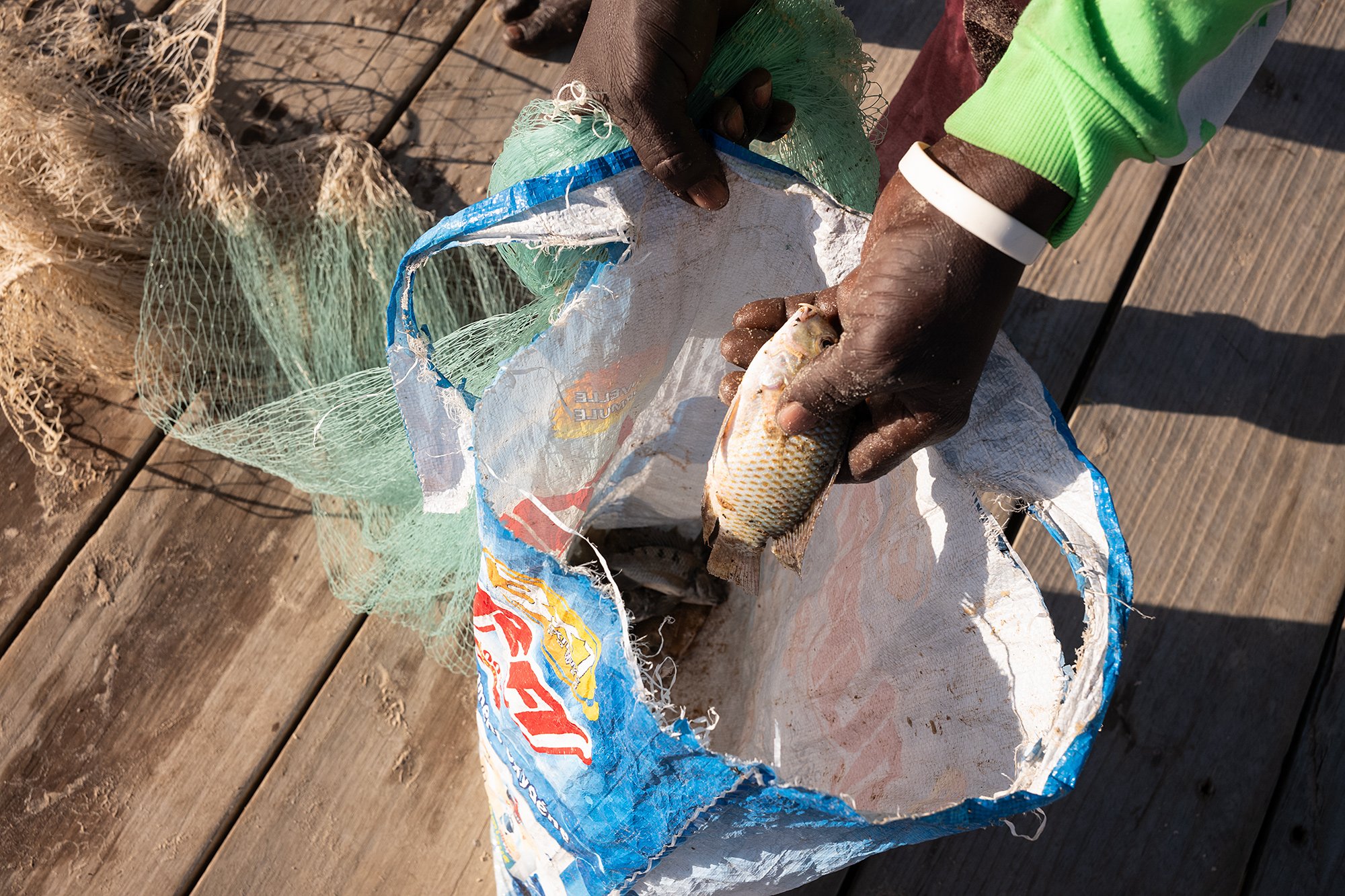
As the shadows lengthen I decide to go for a walk. I check google maps and see that there’s a church and mosque in the nearby village of Mar Lodj and decide to take a look. I step out from the camp and cross a large field dotted with futbol posts and criss-crossed with cart tracks. A group of children pass me and ask me for photos.
It’s not clear to me whether they want me to take their photo or if they want a photo with me. One hands her phone to a friend and poses beside me, answering the question. I pose with her and hear the shutter click. I thank them and hear them chattering amongst themselves as they head towards the river.

At the edge of the field I enter an area shaded by trees. A dirt road leads by the church and through to the village square. The mosque sits to one side. I pass a large tree bathed in the late afternoon light. The sound of pigs surprises me and I see a small drift of pigs round a corner.
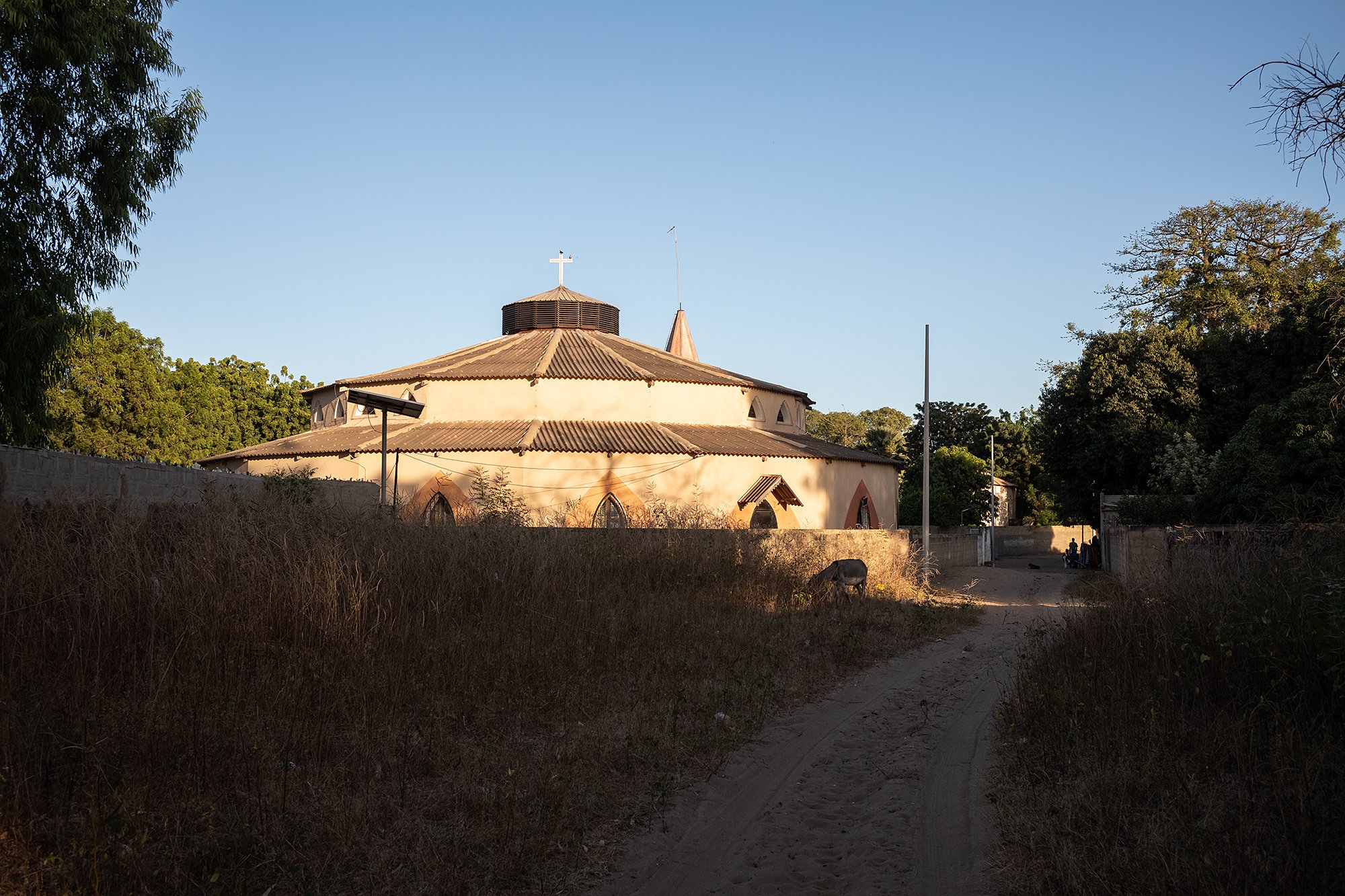




A group of people are gathered in the square, sitting on plastic chairs, facing a speaker. I turn to the left and take a road that runs along the opposite side of the church I had first encountered. A shrine covered in bouganvilla sits across from the main enrance..
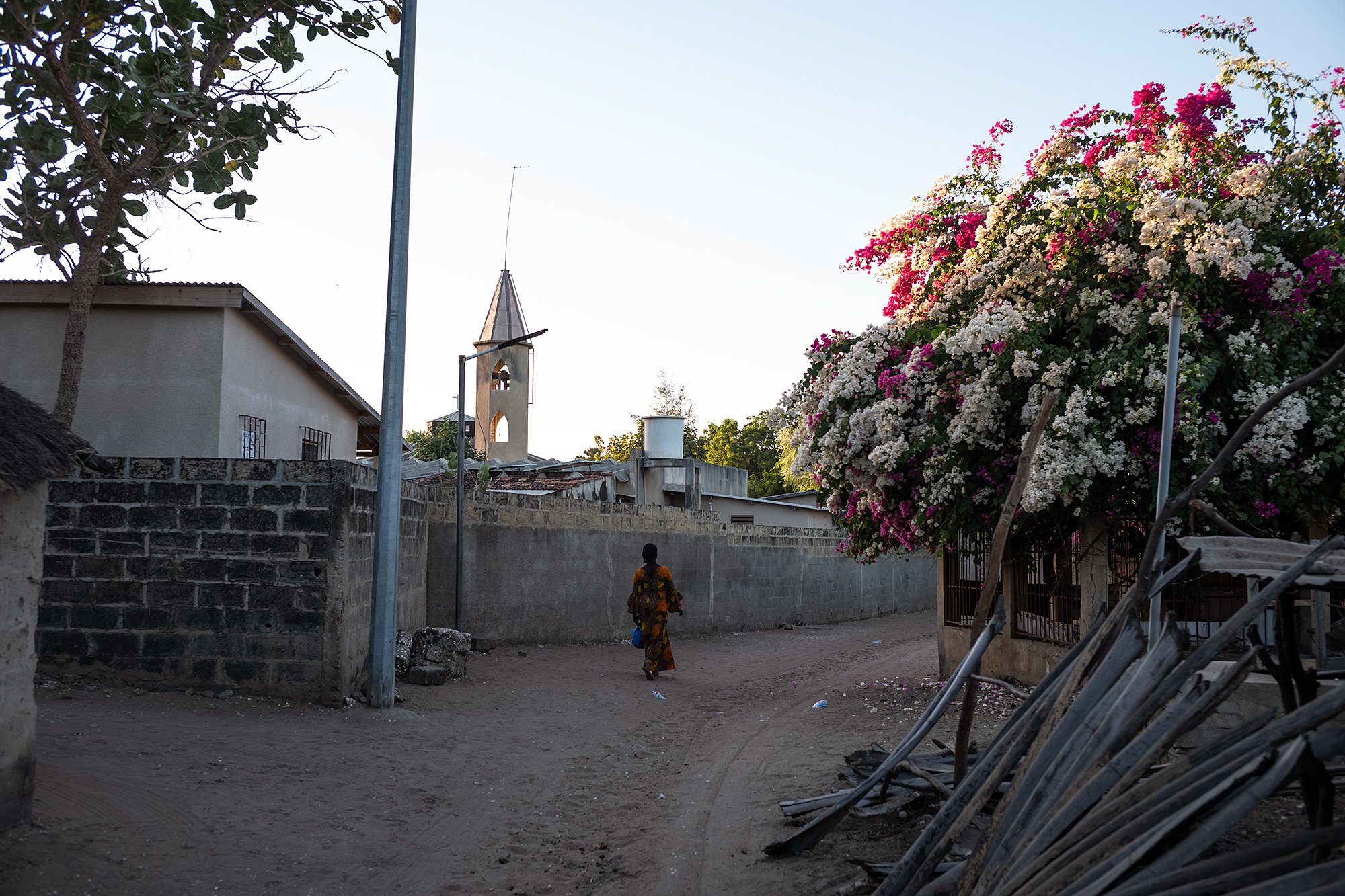

Nearby I pass another beautiful tree bathed in light. Nearby a couple of tourists seem to be haggling with a woman over souvenirs. A horsedrawn cart sits nearby and, I assume, their guide. No one seems to be in a hurry and they sit leisurely by the seller perusing her wares.

I follow the road back out into the field, towards the water. A large tourist market sits to my left. I had passed it on the way to town; it was practically empty. This time a man emerges from one of the stalls and asks me to come take a look. I thank him but tell him no and continue on to the camp.
There, I change into my swimtrunks and take a quick dip in river.



As the sun starts to set I see a number of people climb into a pirogue on the shore. Roberta’s son tells me they’ve been at it a while. There’s too many for the boat not to ground itself and some have to get off and come to the dock where the boat picks them up. They’re silhouetted against the setting sun as they head in the direction of the ocean.



I linger on the dock, shooting video of the sunset, which I’ll include here once it’s uploaded. Here and there small schools of fish break the calm of the water.
Once the sun goes down the wind picks up, sending ripples across the surface of the river. I watch the sun disappear behind the mangroves and dusk settle into night. And then the lights of the camp come on and it’s time to wash up for dinner. I can already see why Amadou finds this to be his favorite spot in all of Senegal.
29 December 2023
🇸🇳

